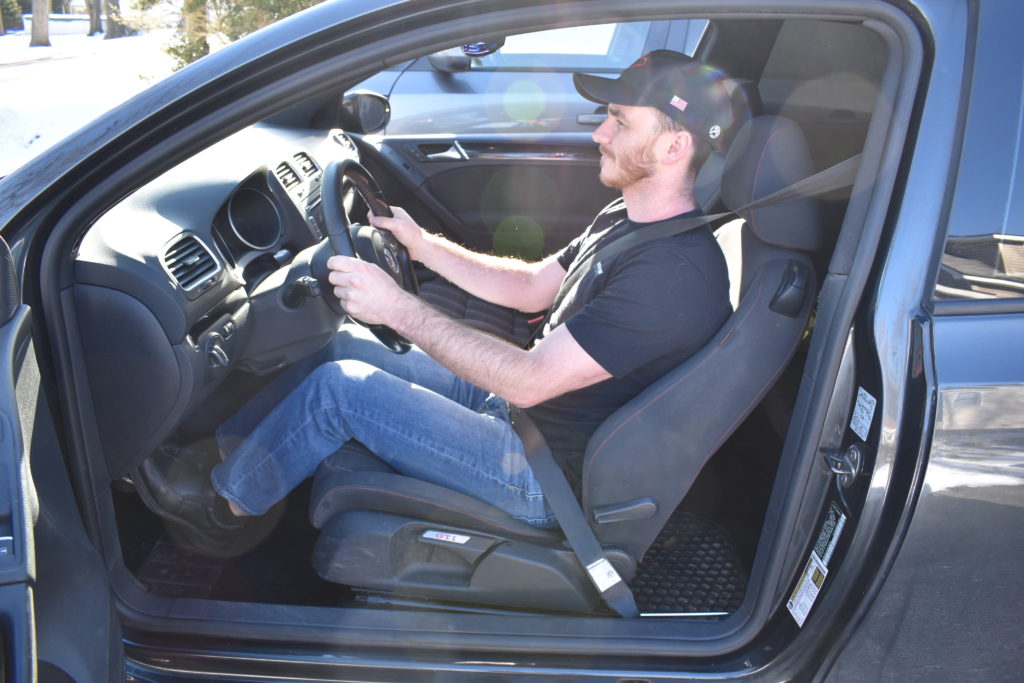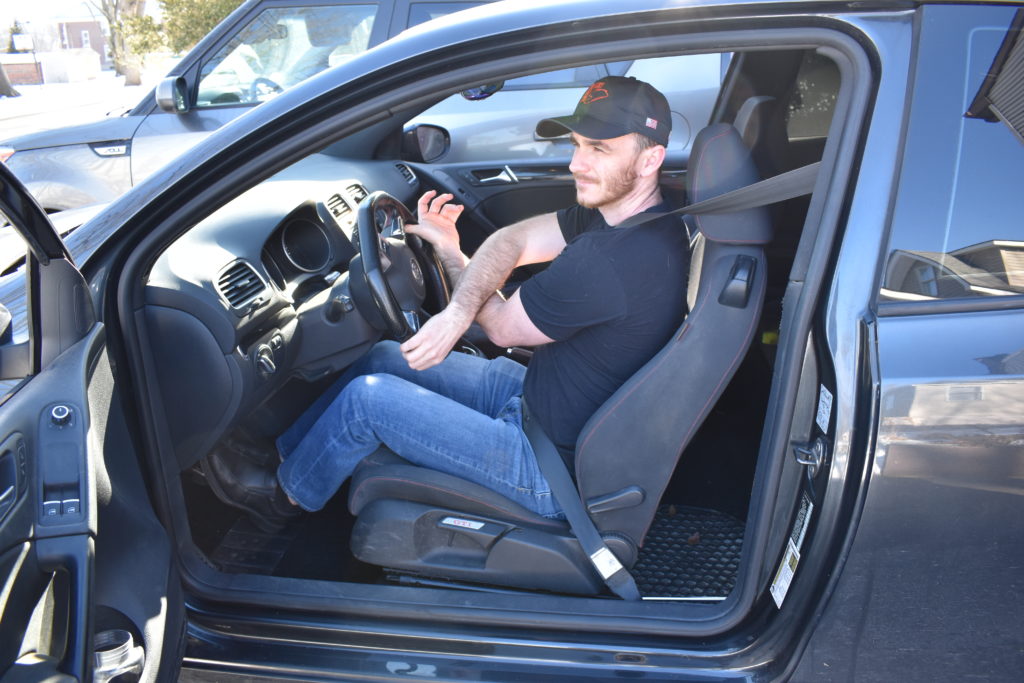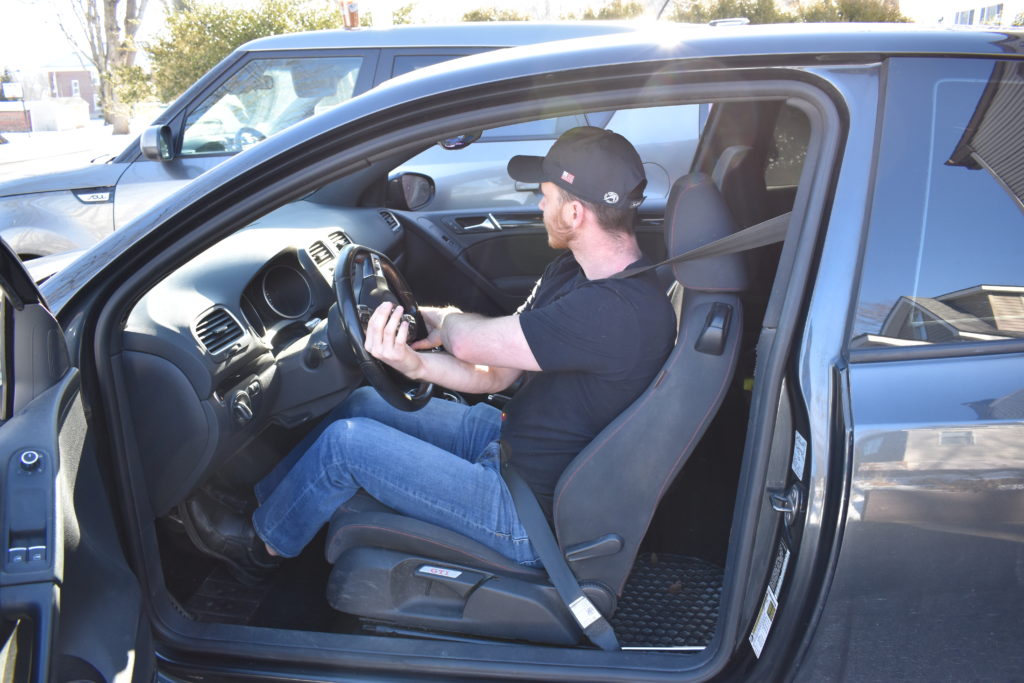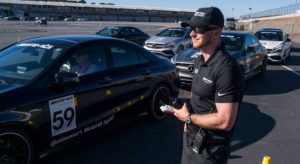Such a simple thing that doesn’t get enough credit these days in the racing and high performance driving industry is getting the driver into the ideal seating position.
It’s not just about getting yourself comfortable in the car, but also making sure your body positioning in the seat allows for the human movement system to function optimally.
If any of your joints are at the wrong angle in the car, a compromise will be made somewhere in the body that will lead to poor posture and decreased neuromuscular efficiency. That is, how well the nervous system and muscular system talk to one another. Something very important to the performance driver!
There is a lot of “free” driver performance to gain or lose here, so the stakes are higher than you realize. Very commonly I see track drivers leave so much driver performance on the table when not much time is spent adjusting the seat.
You could probably guess by now but…
Seating position matters more than you think.
Body Mechanics & Posture
I personally have gone through plenty of back pain and discomfort due to spine misalignment on my own. And fixing it hasn’t been fun, but it hasn’t only improved my performance behind the wheel, but made me feel a whole heck of a lot better in normal life too!
We all have heard the notion that you should always try and hold your back straight whenever possible when picking something up. When you go to pick something off the floor, you should be bending at the hips and not in your spine.
And for the athlete, proper alignment of the human movement system is critical, and it’s no different for the track driver.
But what does proper posture behind the wheel look like? Something like this:
How do we get here? What are some things we want to pay attention to when it comes to finding your own ideal seating position?
I have come up with a list of questions to ask yourself when it comes to finding the right seat positioning for your next on track session.
Is your butt all the way back in the seat?
It’s important to have your butt all the way back in the seat.
This means getting into a position where your lower and mid back are firm against the seat. The last thing you want to have is an arch in your back!
In order to tell if you’re arching your back, see if you can slide your hand anywhere between you and the seat without touching yourself. If you can and there’s an air gap between yourself and the seat, your back isn’t straight.
In order to fix this, you must flex your abs and shuffle your pelvis around until all of your butt, low and mid back are touching the seat.
There should be a solid connection between your back and the seat from your mid back down, with no air gaps where you could slide your hand between yourself and the seat.
Does the angle of your pelvis achieve a neutral spine?
Your pelvis can rotate forward and back, having either an anterior or posterior tilt. Depending on this angle, your back can either be curved or perfectly straight.
While seated with your butt firm against the back of the seat, try squeezing your glute muscles, rotating your hips backward. A good cue for doing this is to “show off your belt buckle” to someone while you’re seated. Did your butt slide forward in the seat? If it did, you are now at least closer to the correct hip positioning!
If it didn’t, you were in the right spot anyway.
The idea here is that your lower back is straight.
Many people have an anterior rotated pelvis when they sit, creating a hyper extension of the low back. This is where you’d see air between the driver and the seat in the mid back region.
We want to square off the hips so they end up in a nice neutral spine.
Play around with this. But you should notice a particular angle of your pelvis that results in the least discomfort in your low back. And shoot for this every time before you tighten those belts!
Are your shoulders centered in a neutral position?
Many people today round forward at the shoulders and have what’s called “upper crossed syndrome.” You can thank sitting for this!
This is a very common postural imbalance in the human movement system and certainly affects the high performance driver.
Even in my seating position picture, I’m a little too rounded forward at the shoulders. But I try my best to align my seat so that my shoulders sit back when I reach for the steering wheel. I never want to roll my shoulders forward to get to the wheel. I always want to keep my shoulders neutral and straighten at the elbow joint if I have to.
Or move the steering wheel closer if necessary.
Your trapezius (upper back muscles) should rest partially engaged, pulling the shoulders back to a neutral positioning. A good cue for this would be to shrug your shoulders back (not up.)
This will allow for the best possible range of motion at the shoulder joint and increase neuromuscular efficiency.
Optimal shoulder positioning will enable the performance driver to maximize the amount of steering that is possible without moving the hands from the 9/3 position as pictured above.
This will make our steering inputs much more coordinated.
How much bend is in your knee during maximum braking pressure?
The amount that your knee is bent (during a really hard brake application) is very important.
Many people sit too far back from the pedals, not realizing how hard they can/are going to push the brake pedal in a high-performance driving atmosphere. Push the brake pedal hard first, then while maintaining this pressure, slide your seat forward until you get a bend you like. I typically like around a 100-degree bend of the knee, or anything just shy of 90 degrees.
I feel that this allows for good leverage over the pedals while maintaining coordination and not having the sensation of feeling too close to everything.
Where on the floor-mat does your heel sit? How much is your foot dorsiflexed at 0% throttle?
This is something 99% of people don’t do. While seated, flex your ankle up bringing your toes towards your knees. You should feel a muscle in your shin area working, your Anterior Tibialis.
This muscle is usually very weak an untrained unless you’re an every day athlete.
When most people drive they have their toes pointed too far down and away from their knee.
This draws the heel further away from the hinge of the throttle pedal. When this happens, you have reduced the range of motion of the ankle joint in relation to the action of the pedal. This leads to poor coordination on the pedals because you then end up making big pedal adjustments with your leg muscles instead of more fine, precise movements like you would with your foot muscles.
Instead, flex your ankle upwards, bring your toes towards your knees, draw your heel closer to the throttle pedal.
Practice holding this position at 0% throttle. Then, rotate at the ankle onto the throttle pedal and feel your coordination improve.
The pivot point of your ankle should be as close to the pivot point of the throttle as possible.
This may feel a bit unnatural at first, but once you develop the flexibility you can now make pedal adjustments using your ankle muscles. You will be amazed how much better feel you have on the pedals.
How much are your elbows bent at 9/3 on the steering wheel?
Just like the optimal bend of the knees, I like 100-degrees at the elbow.
When making this adjustment, it’s important to note that we don’t change the position of our shoulders while doing so. The shoulders must remain back, with trapezius muscles slightly engaged. This will result in a centered, neutral positioning of the shoulders.
This means don’t round forward at the shoulders to reach the wheel.
Try either drawing the steering wheel towards you, or angling the back rest up so long as you can continue to hinge at the hips and not arch the low back.
If your flexibility doesn’t allow all these things to fall together, I’d rather have you have ideal spine and hip positioning and have a straighter set of arms to the wheel.
FREE PDF GUIDE
6 STEP GUIDING TO FINDING
THE PERFECT SEATING POSITION
You’ll also receive updates and wisdom once per month. Unsubscribe at any time. We’ll never share your information.
Conclusion
Hopefully you’ve learned a little bit more about seating position and the how/why it’s so important to the performance driver!
There isn’t another area of improvement out there that’s as easy as fixing this, and you’ll be more comfortable in the car (and in life) too!
Win win.

ABOUT THE AUTHOR
JONATHAN GORING
From 2006 Skip Barber National Champion to 2015 Spec Miata SCCA Runoffs Champion, and with the 2008 IMSA Lites title in between, I’ve been in the racing scene for quite some time. I’ve been fortunate to race against (and beat sometimes) the best drivers in the world currently racing in various top level motorsports.
I’m very passionate about the art/science of performance driving and want to share that passion with you.
WANT TO DRIVE FASTER THAN EVER?
Join my email list for monthly articles, driving tips, exclusive announcements on new things I’m working on and wisdom delivered straight to your inbox! You can unsubscribe at any time.





